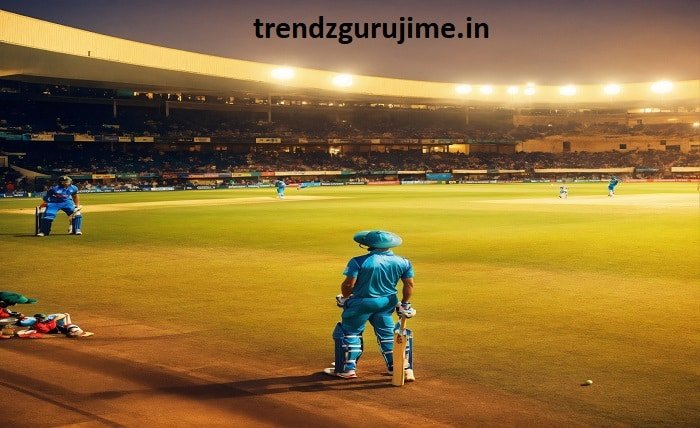The Narendra Modi Stadium, formerly known as the Sardar Patel Stadium, is one of the most iconic cricket venues in India. Located in Ahmedabad, Gujarat, it has gained international recognition for its state-of-the-art facilities and massive seating capacity. This blog post provides an in-depth pitch report of the Narendra Modi Stadium, exploring its characteristics, historical performances, and what players and fans can expect from this remarkable venue.
1. Narendra Modi Stadium
The Narendra Modi Stadium, named after the current Prime Minister of India, Narendra Modi, is the largest cricket stadium in the world with a seating capacity of 132,000 spectators. It has hosted numerous high-profile cricket matches, including international fixtures, Indian Premier League (IPL) games, and domestic tournaments. Understanding the pitch conditions at this stadium is crucial for players, coaches, and cricket enthusiasts.
2. Historical Overview of the Stadium
The Narendra Modi Stadium was inaugurated in 1983 and underwent significant renovations, reopening in February 2020 with enhanced facilities and increased capacity. The revamped stadium boasts modern amenities, including four dressing rooms, a clubhouse, and an Olympic-size swimming pool. These upgrades have solidified its status as a premier venue for cricketing events.
3. General Characteristics of the Pitch
The pitch at Narendra Modi Stadium is known for its versatility. Historically, it has offered assistance to both batsmen and bowlers, depending on various factors such as weather conditions, pitch preparation, and match format. Generally, the pitch provides good bounce and carry, making it favorable for fast bowlers, while also offering turn for spinners as the game progresses.
4. Pitch Behavior in Test Matches
In Test matches, the pitch at Narendra Modi Stadium tends to be a balanced surface. On the first couple of days, it usually supports batsmen with consistent bounce and pace. As the match progresses into the third and fourth days, the pitch tends to deteriorate, bringing spinners into play. Historically, matches at this venue have seen a fair distribution of high scores and dramatic collapses.
5. Pitch Performance in One-Day Internationals (ODIs)
For ODIs, the pitch at Narendra Modi Stadium generally favors batsmen, especially in day-night encounters. The surface remains true throughout the 50 overs, allowing batsmen to play their shots freely. However, under lights, the pitch can offer some assistance to fast bowlers with movement and swing, particularly during the early overs of the match.
6. T20 Pitch Dynamics
In T20 matches, the pitch at Narendra Modi Stadium is typically a batsman’s paradise. The flat surface, along with shorter boundaries, often results in high-scoring contests. Fast bowlers need to rely on variations and accurate yorkers, while spinners can be effective if they maintain good line and length. The pitch’s ability to stay consistent makes for thrilling T20 games.
7. Impact of Weather Conditions
Weather conditions play a significant role in the behavior of the pitch at Narendra Modi Stadium. During the summer months, the dry heat can cause the pitch to crack, aiding spinners. Conversely, during the monsoon season, the pitch tends to be more lively, benefiting fast bowlers. Dew can also be a factor in day-night matches, affecting the grip and movement of the ball.
8. Key Matches and Memorable Performances
The Narendra Modi Stadium has witnessed several memorable cricketing moments. From Sunil Gavaskar’s double century against the West Indies in 1983 to the recent pink-ball Test match where Axar Patel took 11 wickets against England in 2021, the stadium has hosted numerous historic performances. These matches have showcased the pitch’s ability to produce exciting cricket across all formats.
9. Preparing for a Match at Narendra Modi Stadium
Teams preparing for a match at Narendra Modi Stadium need to consider the pitch conditions closely. Batsmen should be ready for fast, bouncy deliveries initially, while also preparing for spin as the game progresses. Bowlers need to adapt their strategies according to the pitch behavior and weather conditions. Flexibility and preparedness are key to success at this venue.
10. Future Prospects and Developments
With its world-class facilities and diverse pitch conditions, the Narendra Modi Stadium is set to host many more high-profile matches in the future. Upcoming international series, IPL seasons, and potentially ICC events will continue to put the spotlight on this venue. Ongoing maintenance and upgrades will ensure it remains at the forefront of cricketing excellence.
Conclusion
The Narendra Modi Stadium, with its rich history and modern amenities, offers a dynamic and challenging pitch for cricketers. Whether in Test matches, ODIs, or T20s, understanding the pitch conditions is crucial for players and teams to succeed. As the stadium continues to host significant cricketing events, it will undoubtedly remain a pivotal venue in the cricketing world.
FAQ
1. What is the seating capacity of Narendra Modi Stadium?
The Narendra Modi Stadium has a seating capacity of 132,000, making it the largest cricket stadium in the world.
2. How does the pitch at Narendra Modi Stadium behave in Test matches?
In Test matches, the pitch offers consistent bounce and pace initially, supporting batsmen. As the game progresses, it deteriorates and aids spinners.
3. What can batsmen and bowlers expect in ODIs at this venue?
The pitch generally favors batsmen in ODIs, especially in day-night matches. However, fast bowlers can find some movement and swing under lights.
4. Is the pitch at Narendra Modi Stadium conducive to high scores in T20s?
Yes, the pitch is typically flat and favors batsmen, leading to high-scoring T20 matches. Bowlers need to use variations and accuracy to be effective.
5. How do weather conditions impact the pitch behavior at Narendra Modi Stadium?
Weather conditions significantly affect the pitch. Dry heat can cause it to crack, aiding spinners, while monsoon conditions make it lively, benefiting fast bowlers. Dew can also impact day-night matches.





